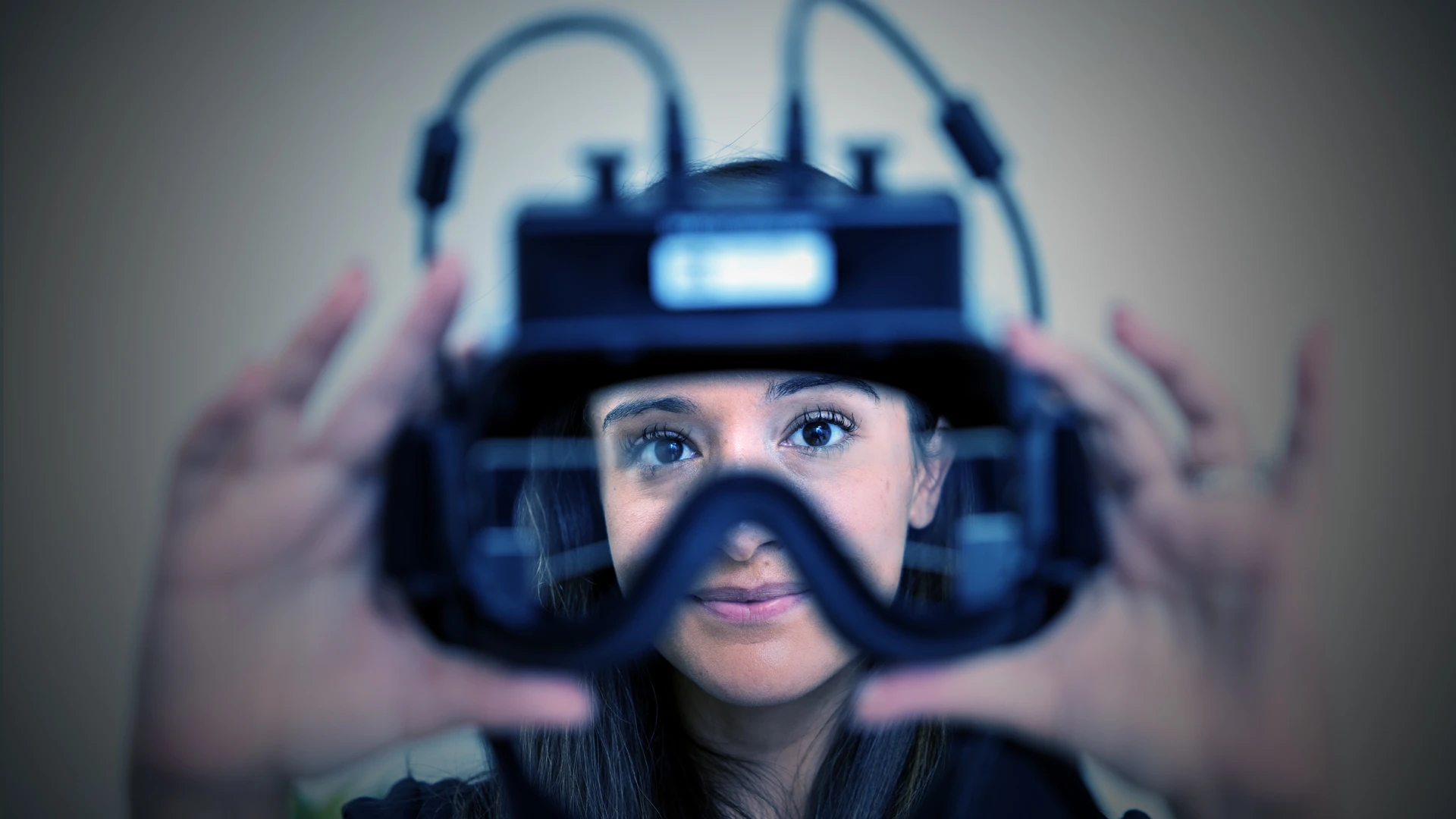Opened on October 4, 2021, at the Mount Sinai-Union Square multispecialty facility, the state-of-the-art Center offers innovative and life-changing therapies to accelerate rehabilitation for kids with a variety of conditions, including cerebral palsy, paralysis, developmental disorders, traumatic brain injury, and concussions.
“The Lazarus Center is a really special center at Mount Sinai that is all about using the latest technology to give kids the best possible care that is right for them, personalized to their needs,” says Lazarus Center Director David Putrino, PhD, Director of Rehabilitation Innovation for the Mount Sinai Health System.
Surprisingly, there had actually been very few rehabilitation options for children with disabilities, or being discharged from a hospital, in the New York City area prior to the Center’s opening, Dr. Putrino notes.
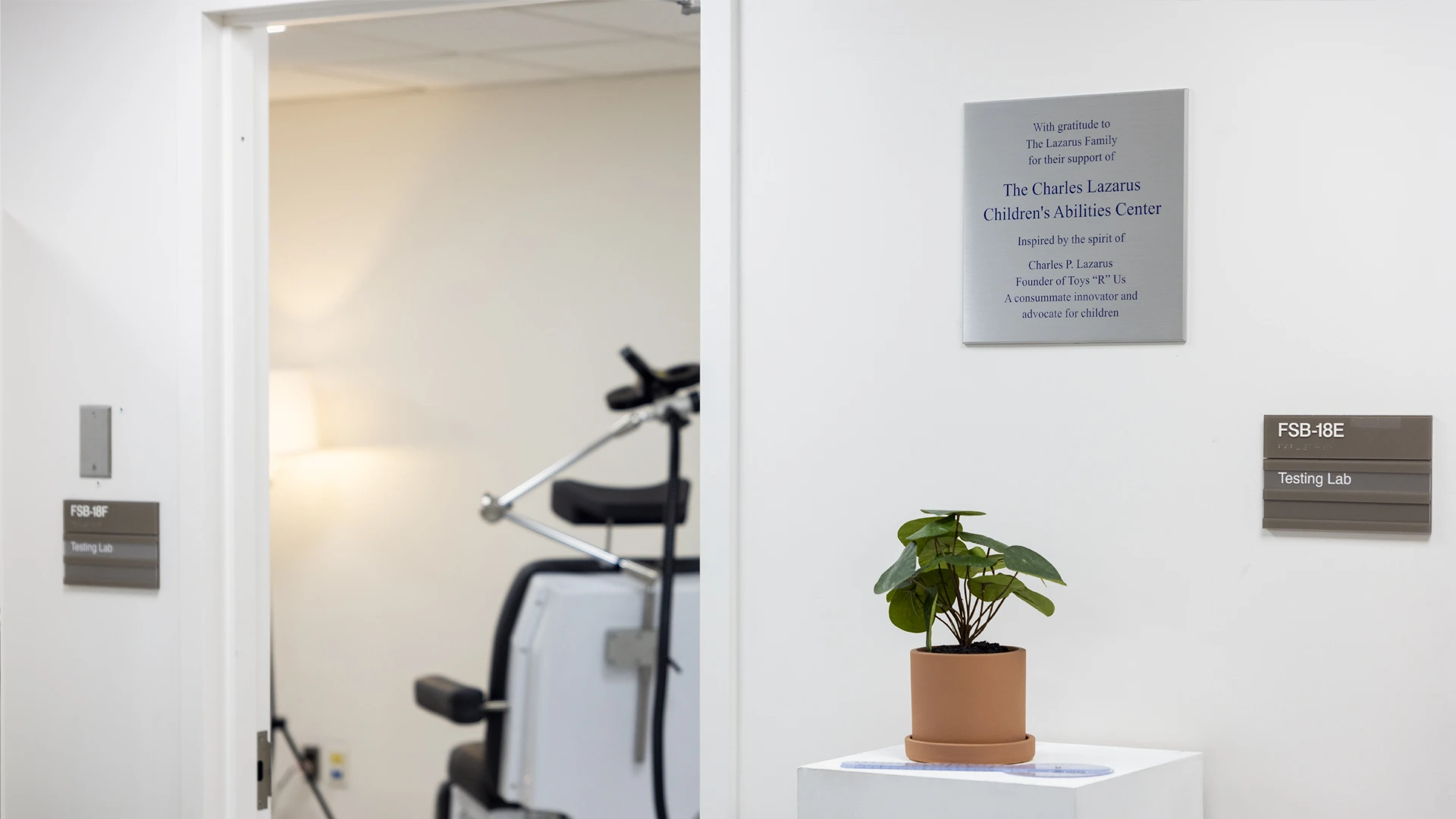
The Charles Lazarus Children's Abilities Center offers not only therapy, but also conducts research in various areas, including concussion and cerebral palsy.
The Center takes its name from Toys “R” Us founder and philanthropist Charles Lazarus, whose family donated $5 million in his memory. The gift was provided to enable children’s access to high-quality care, regardless of their physical location or insurance status.
The look and feel of the Lazarus Center has been designed to provide children with an enchanting experience every time they visit. The child-centered focus is key to providing meaningful care, says Clinical Director Jenna M. Tosto, DPT, PT. “Oftentimes that’s missed. Children aren’t just small adults.”
“Charles Lazarus said kids should have their own space,” says Dr. Putrino. “We wanted to create a space where kids were excited about coming to the hospital, as opposed to crying because they didn’t want to go.”
Although the Center opened in 2021, the team has built out, over the last three years, comprehensive rehabilitation programs for kids with disabilities. The team is planning to replicate its success with a new location on the Upper East Side.
Research is another key component, with the aim of accelerating the average timeframe new technologies might become commercially available and in medical practice, Dr. Tosto notes.
Work from the Lazarus Center synergizes with Mount Sinai’s Abilities Research Center, which focuses on adults, with both centers undertaking translational research and dual clinical research initiatives. “Our mission is to accelerate the process to enhance access to life-changing technology,” Dr. Tosto says.
Here are some key programs at the Lazarus Center:
Making Treatment Feel Fun: Therapy as Play
“Therapy as Play” is a core program of gamified rehabilitation for kids with neurological injuries and movement disorders. The idea is to allow children to practice day-to-day functional movements repetitively while playing their favorite video game using adaptive gaming equipment. In doing so, their brains can create new pathways, learn new movements, and have fun while they’re doing it, Dr. Putrino says.
“What you want out of a good rehab program is many repetitions, over and over again, every single day,” he notes.
That can be logistically difficult for parents when they have to bring a child to a facility daily. Engagement is also a challenge, because getting the child to do something over and over again is repetitive and boring.
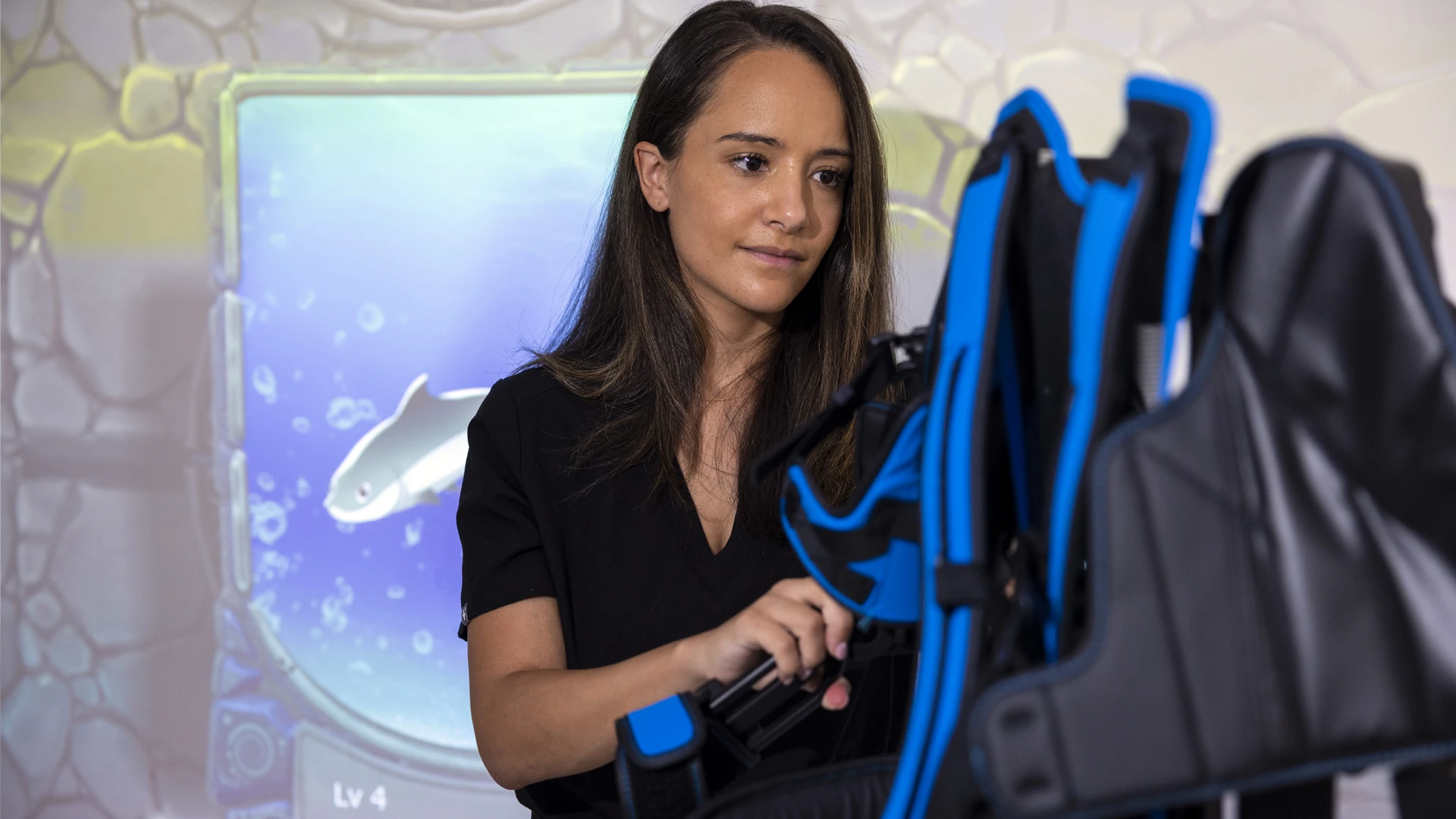
Jenna Tosto, DPT, PT, adjusting a harness for rehabilitation equipment that uses video games as a modality for delivering therapy.
The Therapy-as-Play program uses video games with adaptive controllers and custom software to develop personalized gaming setups for every child. Thus, children can undergo rehabilitation and not feel as if they’re being forced to perform the movements, Dr. Putrino explains.
Another advantage, particularly with using Xbox games, is that the child can play mainstream games with other children who are using regular nonadaptive controllers. “To use this modality not only for rehabilitation, but also for the kids to socialize with their siblings or friends who are playing the same game, I think is a really incredible thing,” Dr. Tosto says.
The program has seen exceptional results, with individuals performing 5,000 repetitions of a movement in a single sitting, compared to typical benchmarks of 20 to 50 repetitions.
“We’re increasing the intensity of therapy by an order of magnitude, and the evidence tells us that the more therapy these kids get, the better their long-term outcomes,” Dr. Putrino says.
The Lazarus Center team has been working with the Centers for Medicare and Medicaid Services to establish unique billing codes and insurance supplementation that allow coverage for needed devices. They’re also developing new guidelines and standards for delivering high-dose therapy using the gaming setups.
On the research side, the team is also collecting data and working with industry partners such as New York-based AI firm Statespace to assess usability, enjoyability, and clinical outcomes.
Comprehensive Concussion Program: Play Safety
The Mount Sinai rehabilitation team collaborated with local schools’ athletics programs to create the “Play Safety” program. In-depth baseline assessments of student athletes are conducted prior to each of the sporting seasons; should a student-athlete experience a concussion, the degree of injury can be more quickly and comprehensively determined, along with tailored rehabilitation care.
This is important because typically only about 1 in 10 children who gets a concussion is diagnosed. About two to three children are referred to the Lazarus Center for concussions every week during the sports season.
Beyond the usual cognitive testing, Play Safety collects movement, eye function, balance, and heart rate variability data through a cellphone app designed by the Lazarus Center team.

Dr. Tosto examining an eye-tracking headset, commonly used in the center's concussion program.
If an athlete sustains a head injury, the athlete can come to the Lazarus Center for comprehensive concussion care or go to a regular provider. The program can give the provider the baseline information to gauge functional change, Dr. Putrino says.
The team is also testing the use of an electroencephalography-based assessment in a clinical trial to get more objective baseline assessments outside of what’s traditionally done, Dr. Tosto says.
Thus far, the program has launched in one school district in New York City, with plans to rapidly expand to others this year. It includes educational sessions for parents and teachers about concussions, such as how long before a child can return to sports and to the classroom, and complex issues that can arise. “With concussions, you have no physical signs of injury,” Dr. Putrino says. “Navigating that can be tricky and challenging for parents. We give them a roadmap.”
Importantly, he says, the program is offered free of charge. “We’re trying to focus on historically excluded, lower socioeconomic groups. The funding from [the Lazarus family] enables this work.”
A Novel Airway Clearance Solution for Cystic Fibrosis
Handheld positive airway devices, used to hold airways open to enable clearance, can cost hundreds of dollars. But Jamie Wood, PhD, PT, a respiratory physiotherapist and health researcher at Icahn Mount Sinai, developed a design that allows his device to be manufactured at approximately $2 each, spelling lower retail costs.
The innovation stems from Dr. Wood’s current research focus on low-cost respiratory rehabilitation solutions. He is also one of a handful of airway clearance instructors accredited worldwide by the International Physiotherapy Group for Cystic Fibrosis.
The Lazarus Center team has now overseen the manufacture of 3,000 devices and is currently conducting clinical trials to make sure these devices are every bit as effective as the more expensive commercial models. Following these trials, Dr. Wood plans to rapidly share his methods and device development process with resource-limited countries such as Brazil, Nepal, and Honduras, so that the Lazarus Center airway clearance program can be replicated to dramatically improve the overall life expectancy of kids with cystic fibrosis.
The team led by Dr. Wood has been busy with programs educating patients about the airway clearance device, but also with other initiatives. These include programs on appropriate nutrition and physical activity for people with cystic fibrosis in New York City, as well as in the developing countries. The team is also working on augmented reality games for patients to be guided through engaging activities while performing airway clearance in hopes of improving tolerability and adherence.
Connected Caregiver Network: Peer Support and Much More
The “Connected Caregiver Network” program aims to alleviate the isolation that parents often feel after a child is born, especially for first-time parents and caregivers.
“They can lose social support, which can be harmful for physical health and emotional well-being.”
David Putrino, PhD
In the Connected Care Network, new parents who are in the same or neighboring ZIP codes in Manhattan, the Bronx, Brooklyn, and Queens, are identified, and engaged in a weekly course with a Mount Sinai social worker who is trained in first-time parenthood. There’s a lot of social programming layered in that encourages parents to get to know each other, create a social network to rely on each other, and feel less isolated.
For now the program is virtual, but could become hybrid in the future.
The program was based on one developed in Australia that had been around for decades, which has created lifelong friendships among the new parents and among their kids.
Importantly, Connected Care Network is rooted in health equity. “We wanted to create a program mainly for low-income parents so they don’t fall through the gaps in the health care system, and make sure the hospital stays connected to them,” says Dr. Putrino.
Featured
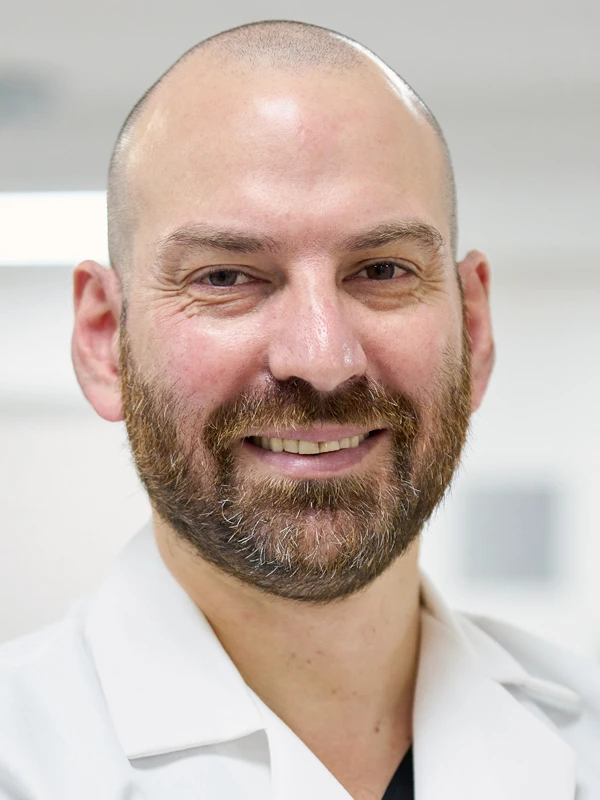
David Putrino, PhD
Director of Rehabilitation Innovation, and Professor of Rehabilitation and Human Performance
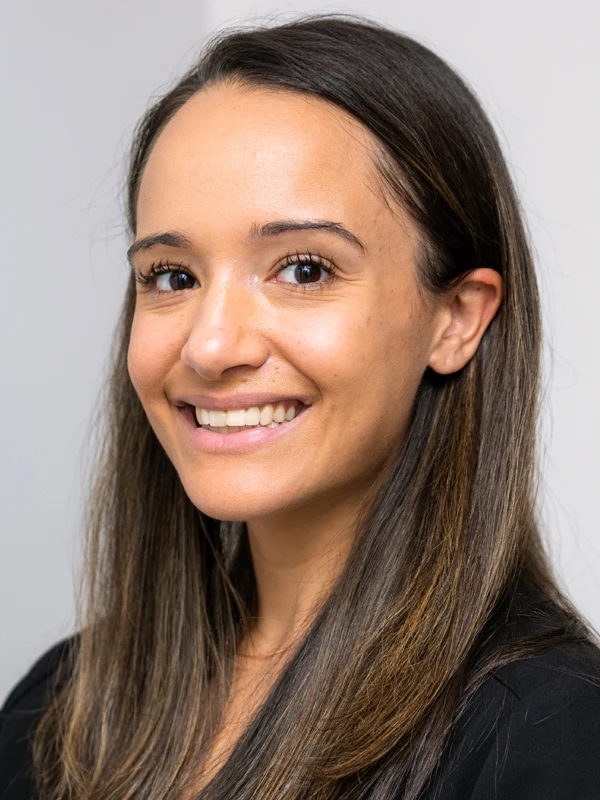
Jenna M. Tosto, DPT, PT
Clinical Director, Charles Lazarus Children’s Abilities Center
